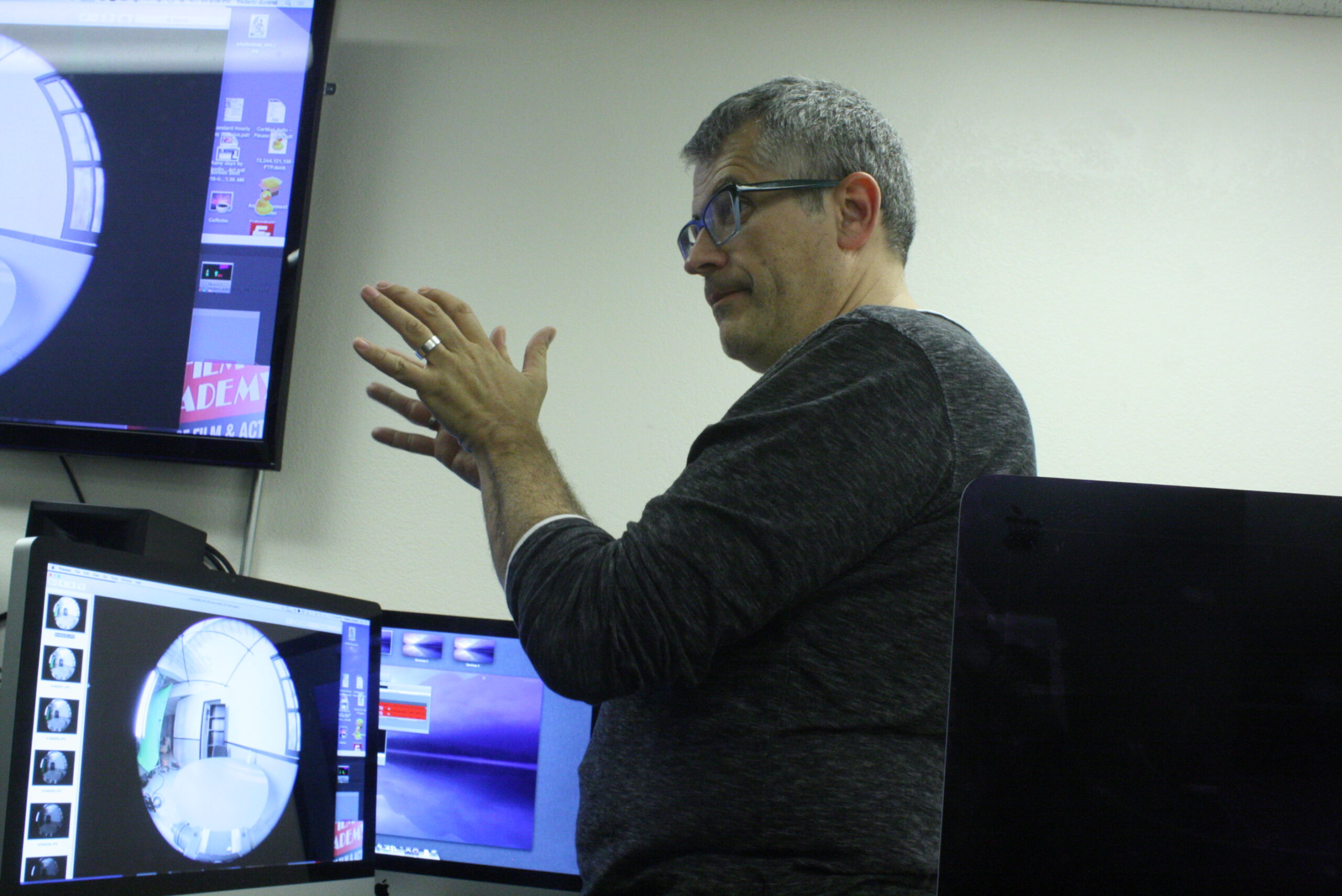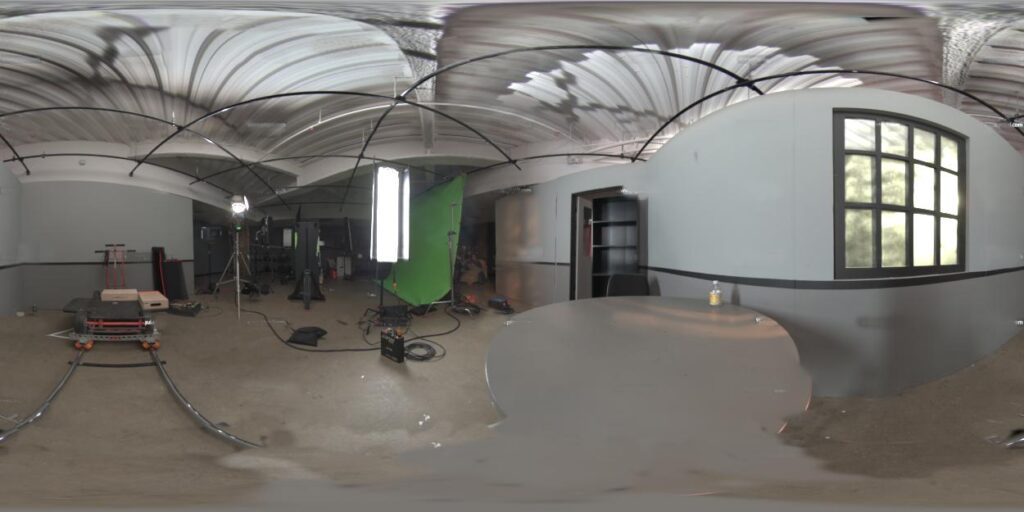Virtual lighting expert and Animation department faculty member Fred Durand treated students of chair of animation Mark Sawicki’s digital effects cinematography class to a guest lecture and demonstration of Image Based Lighting. Mr. Durand has served as a digital artist for Disney Animation, Sony Imageworks, The Mill and Digital Domain on such projects as “Harry Potter and the Chamber of Secrets,” “Tomb Raider,” “Shark Tales” and “2012.”

The demonstration began with the students lighting and executing a simple dolly move toward a performer sitting at a table. After the dolly shot Sawicki demonstrated how to shoot a 360 degree High Dynamic Range Image of the set using a Fish Eye lens and one of the school’s Canon 5D cameras. Each of the 4 camera views of the set was shot plus and minus 4 stops of exposure capturing the extreme latitude of the entire foot-candle range of the lights on the set. Both the dolly shot and the HDRI data were given to Mr. Durand to add synthetic computer graphic props in time for the next class session.
[quicktime]https://www.nyfa.edu/film-school-blog/wp-content/uploads/2016/04/619A0290_comp_v01_small.mov[/quicktime]
In the lecture portion of the exercise Durand explained the process of stitching together all 36 HDRI images to create a virtual bubble onto which was mapped the location and intensity of all the lighting instruments and reflective objects on the set. At this stage Fred also had to create a matte painting to “paint out” the tripod legs underneath the Canon camera. This bubble of set image was then placed around the computer graphic coke bottles to light them with what were essentially the same lights that were used for the live action dolly shot. The “image” of the lights lit the computer graphic props giving them an ultra realistic look that matched the live action exactly.

To ensure that the virtual Coke props stayed locked to the table and tracked seamlessly Durand had to remove all of the rectilinear lens distortions of the live action lens to create a “perfect” lens that would match the perfect lens of the virtual camera that mimicked the dolly move to virtually photograph the Coke bottles. After the virtual camera tracked the CG props the distortion was added back to the virtual photography to match the live action lens so that the virtual dolly move could be composited atop the original dolly move for a perfect match.
At New York Film Academy we strive to have our students take a multi disciplinary approach as they enter the field as cutting edge filmmakers. Our student cinematographers now have the skill sets to light on set with traditional methods and an understanding and vocabulary to collaborate with digital artists in the up to date virtual world of today.